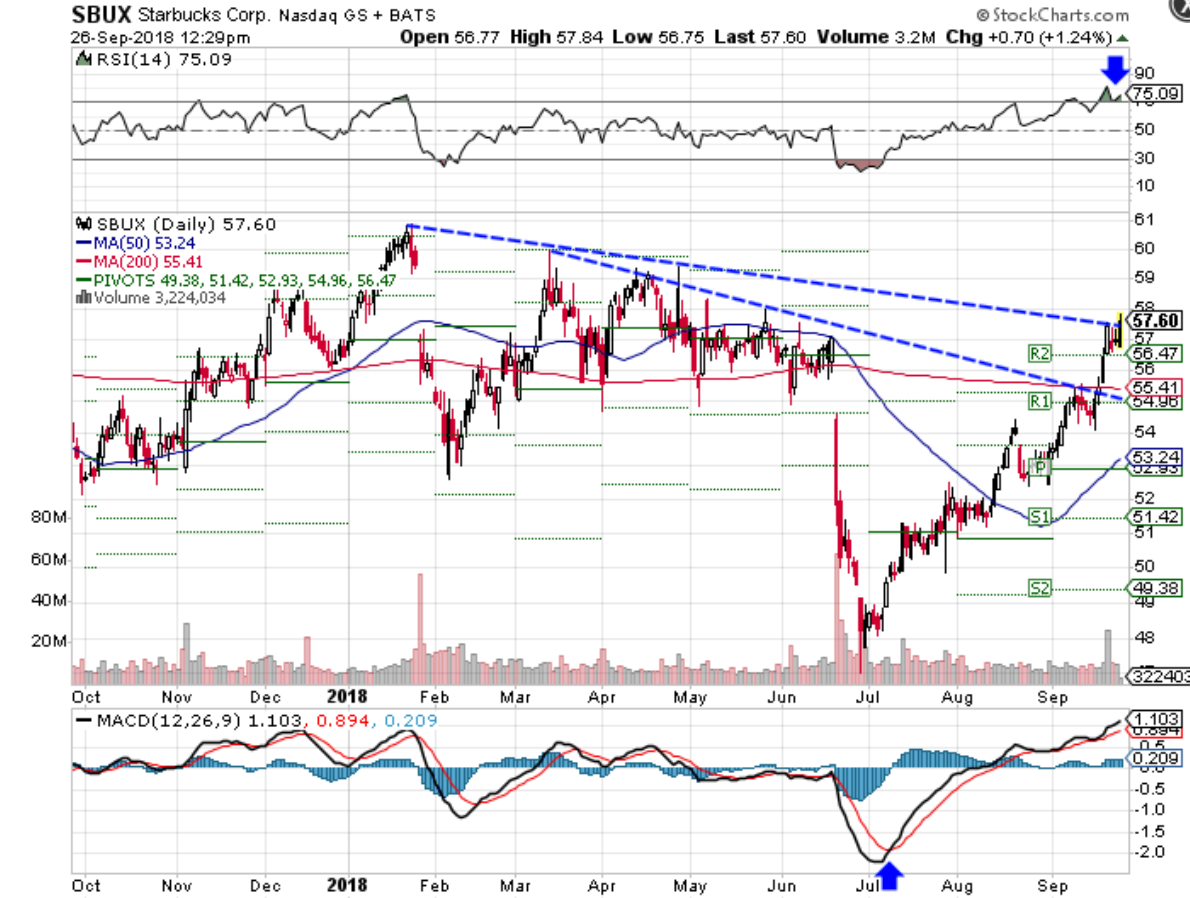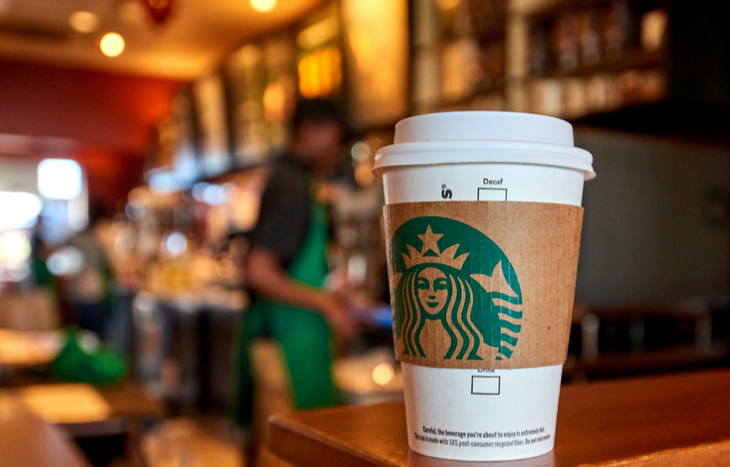Starbucks’ Financial Performance: Sbux Stock

Starbucks, a global coffeehouse giant, has consistently demonstrated strong financial performance, driven by its strategic initiatives and robust brand recognition. Its revenue growth, profitability, and cash flow have remained impressive, reflecting its ability to navigate market challenges and capitalize on emerging trends.
Revenue Growth
Starbucks’ revenue has exhibited consistent growth over the past several years. The company’s global expansion, coupled with its focus on digital initiatives and loyalty programs, has been instrumental in driving this growth. Starbucks’ revenue has grown at a compounded annual growth rate (CAGR) of approximately 8% over the past five years.
Profitability
Starbucks’ profitability, as measured by its operating margin, has remained stable and healthy. The company’s focus on cost management, efficient operations, and product innovation has contributed to its strong profitability. Starbucks’ operating margin has hovered around 15% in recent years.
Cash Flow
Starbucks generates significant cash flow from its operations, which allows it to invest in its growth initiatives, such as new store openings, digital platform enhancements, and acquisitions. The company’s strong cash flow also provides it with financial flexibility to manage its debt and return value to shareholders through dividends and share buybacks.
Factors Driving Starbucks’ Financial Performance
Several factors have contributed to Starbucks’ impressive financial performance:
- Global Expansion: Starbucks has a vast global footprint, with over 34,000 stores in 80 countries. The company continues to expand its presence in both developed and emerging markets, driving revenue growth and market share gains.
- Digital Initiatives: Starbucks has embraced digital technology to enhance customer experience and drive sales. Its mobile ordering and payment platform, Starbucks Rewards loyalty program, and personalized offers have significantly boosted customer engagement and repeat purchases.
- Loyalty Program: Starbucks Rewards, the company’s loyalty program, has been instrumental in driving customer loyalty and repeat purchases. The program offers personalized rewards, exclusive offers, and access to premium experiences, encouraging customers to spend more at Starbucks.
- Product Innovation: Starbucks constantly innovates its product offerings, introducing new beverages, food items, and merchandise to cater to evolving consumer preferences and seasonal trends. These innovations help drive sales and attract new customers.
Comparison to Peers
Compared to its peers in the coffee industry, Starbucks consistently outperforms in terms of revenue growth, profitability, and brand recognition. The company’s global scale, strong brand equity, and effective digital strategies have positioned it as a leader in the industry.
Starbucks’ Key Financial Metrics
| Year | Revenue (Billions USD) | Operating Income (Billions USD) | Net Income (Billions USD) | Cash Flow from Operations (Billions USD) |
|---|---|---|---|---|
| 2018 | 24.7 | 6.4 | 4.3 | 6.7 |
| 2019 | 28.2 | 7.2 | 5.0 | 7.5 |
| 2020 | 26.5 | 5.8 | 3.8 | 5.9 |
| 2021 | 32.3 | 8.4 | 5.8 | 8.7 |
| 2022 | 33.8 | 9.2 | 6.4 | 9.6 |
Starbucks’ Growth Strategy

Starbucks’ growth strategy is a multi-pronged approach that leverages its brand recognition, customer loyalty, and operational expertise to expand its global footprint and drive revenue growth. The company focuses on a combination of new store openings, product innovation, and market expansion to cater to evolving consumer preferences and tap into new markets.
New Store Openings
Starbucks’ growth strategy is heavily reliant on new store openings. The company has a well-defined process for identifying and evaluating potential locations, considering factors such as population density, demographics, and competitive landscape. Starbucks typically opens stores in high-traffic areas with high visibility, ensuring a steady stream of customers. The company has a proven track record of successfully opening new stores in both established and emerging markets, contributing significantly to its revenue growth.
Product Innovation
Starbucks continuously innovates its product offerings to keep pace with changing consumer preferences and cater to diverse tastes. The company’s product innovation strategy involves:
- Introducing new beverages, such as seasonal specials and limited-edition drinks, to create excitement and drive sales.
- Expanding its food menu to offer a wider variety of options, including healthy and customizable choices.
- Introducing new formats and sizes of existing products to cater to different needs and preferences.
Market Expansion
Starbucks has successfully expanded its operations into new markets, targeting countries with a growing middle class and a strong coffee culture. The company’s market expansion strategy involves:
- Entering new countries through strategic partnerships and joint ventures.
- Adapting its product offerings and marketing strategies to cater to local tastes and preferences.
- Leveraging its global brand recognition and customer loyalty to establish a strong presence in new markets.
Effectiveness of Starbucks’ Growth Strategies
Starbucks’ growth strategies have been highly effective in driving revenue and profitability. The company has consistently outperformed its competitors in terms of revenue growth and profitability, demonstrating the effectiveness of its strategic approach.
Comparison to Competitors, Sbux stock
Starbucks’ growth strategy is comparable to that of its competitors, such as Dunkin’ Donuts and McDonald’s. However, Starbucks differentiates itself through its focus on premium coffee, a strong brand identity, and a unique customer experience.
Global Expansion Plans
Starbucks has ambitious global expansion plans, targeting markets with a growing middle class and a strong coffee culture. The company has identified several key target markets, including:
- China: Starbucks has a significant presence in China and continues to expand its operations in this rapidly growing market.
- India: Starbucks is expanding its presence in India, targeting the country’s growing middle class and its increasing demand for premium coffee.
- Africa: Starbucks is exploring opportunities in Africa, a region with a strong coffee culture and a growing middle class.
Starbucks’ Competitive Landscape

Starbucks faces a dynamic and competitive landscape, with a range of players vying for market share in the coffee and beverage industry. Understanding the competitive landscape is crucial for assessing Starbucks’ strengths and weaknesses and identifying potential threats and opportunities.
Key Competitors
The coffee industry is highly competitive, with a diverse range of players operating at various scales. Starbucks faces competition from both large multinational companies and smaller local coffee shops.
- Large multinational companies: These include other coffeehouse chains such as Dunkin’ Donuts, McDonald’s, Costa Coffee, and Tim Hortons. These companies have extensive global reach and strong brand recognition. They often offer a similar product mix to Starbucks, including coffee, tea, pastries, and sandwiches.
- Smaller local coffee shops: These shops often focus on a more specialized or artisanal approach to coffee, offering unique blends and brewing methods. They may also have a stronger focus on community engagement and local sourcing. These smaller players can be more agile and responsive to changing consumer preferences.
Competitive Threats
Starbucks faces several competitive threats that could impact its future performance.
- Rising coffee prices: Fluctuations in global coffee prices can impact Starbucks’ profitability, as it relies heavily on coffee as a key ingredient in its products.
- Competition from smaller coffee shops: The increasing popularity of specialty coffee and the rise of independent coffee shops present a growing challenge to Starbucks. These smaller shops often offer a more personalized experience and a wider range of unique coffee offerings.
- Growth of alternative beverage options: Consumers are increasingly seeking healthier and more diverse beverage options. This trend has led to the growth of alternative beverage options such as tea, smoothies, and kombucha, which compete with Starbucks’ traditional offerings.
Pricing Strategy and Product Offerings
Starbucks has adopted a premium pricing strategy, positioning itself as a provider of high-quality coffee and a unique brand experience. However, it faces pressure from competitors offering lower prices or a more value-oriented proposition.
- Starbucks: Starbucks focuses on offering a premium experience with a wide range of beverages, pastries, and food items. Its pricing strategy reflects this focus on quality and brand value.
- Dunkin’ Donuts: Dunkin’ Donuts offers a more value-oriented proposition, with lower prices on its coffee and other menu items. It has also expanded its product offerings to include more premium beverages and food items, attempting to compete more directly with Starbucks.
- McDonald’s: McDonald’s offers a low-cost coffee option, primarily targeting value-conscious consumers. Its McCafé line of coffee and pastries provides a convenient and affordable alternative to Starbucks.
Competitive Metrics Comparison
The following table compares Starbucks’ key metrics to those of its top competitors:
| Metric | Starbucks | Dunkin’ Donuts | McDonald’s |
|---|---|---|---|
| Revenue (USD Billion) | 32.3 | 10.7 | 40.5 |
| Net Income (USD Billion) | 4.2 | 1.4 | 7.5 |
| Number of Stores Worldwide | 34,317 | 13,100 | 38,698 |
| Average Store Size (sq ft) | 2,000 | 1,500 | 3,000 |
| Average Price Per Cup of Coffee (USD) | 3.00 | 2.50 | 2.00 |
Sbux stock? It’s been a rollercoaster lately! Maybe that’s why they brought in starbucks ceo laxman narasimhan to shake things up. Hopefully, he’s got a magic coffee bean up his sleeve to boost those numbers! If not, I might have to invest in a personal barista…
or just stick to the cheap stuff.
So, you’re wondering about Sbux stock? It’s like a caffeine-fueled roller coaster, up and down, but always with a good cup of joe at the end. And speaking of roller coasters, have you seen Brian Niccol’s net worth?
Brian Niccol net worth is enough to make you want to invest in a whole coffee shop empire, just like Sbux. But hey, at least you can always rely on Sbux to give you that morning jolt, even if your stock portfolio is feeling a bit sluggish.